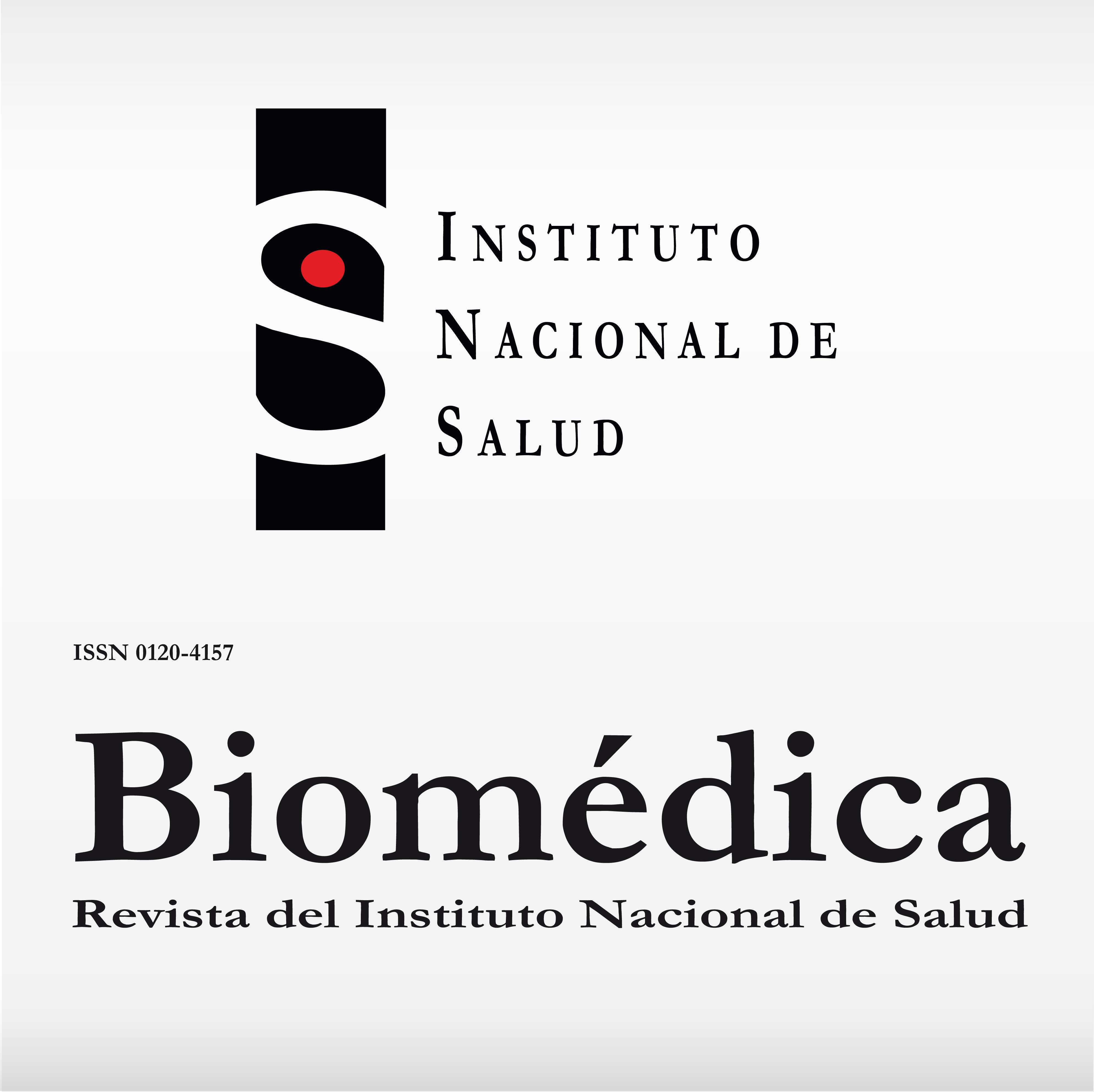Optimizing resources to reduce costs to determine HIV viral load in limited resources settings
Abstract
Introduction: HIV viral load testing is a key factor to evaluate the accomplishment of the UNAIDS target of 90% of viral suppression among people receiving antiretroviral therapy. Pooled samples are a potentially accurate and economic approach in resource-constrained settings, but efficiency can be negatively affected by high prevalence rates of virological failure.
Objective: Strategies were assessed to increase the relative efficiency of pooled HIV viral load testing in resource-constrained settings.
Materials and methods: We evaluated two strategies: a) plasma samples were not included in pools if patients had <12 months on antiretroviral therapy, patients had previous viral load >1,000 copies/ml, or were antiretroviral therapy naïve patients, and b) plasma pools were organized separately for first and second-line antiretroviral therapy regimens. Individual viral load tests were used to compare pooled results.
Results: Negative predictive values were similar for patients on first (100.0%; 95% CI 99.5 to 100.0) and second-line antiretroviral therapy regimens (99.4%; 95% CI 96.9 to 99.9). However, the incidence of virological failure among individuals on first-line antiretroviral therapy was lower than second-line antiretroviral therapy patients (p <0.01), resulting in greater savings in laboratory tests in patients on first-line antiretroviral therapy (74.0%; 95% CI 71.0 to 76.7) compared with the group of patients on second-line antiretroviral therapy (50.9%; 95% CI 44.4 to 57.3) (p<0.01).
Conclusion: Selecting the samples to be included in the pools and selecting the pools according to ART regimens are criteria that could lead to decreased spending on laboratory tests for HIV viral load determination in resource-constrained settings.
Downloads
References
World Health Organization. Consolidated guidelines on general HIV care and the use of antiretroviral drugs for treating and preventing HIV infection: Recommendations for a public health approach. London: WHO; 2013.
Joint United Nations Programme on HIV/AIDS (UNAIDS). 90-90-90 An ambitious treatment target to help end the AIDS epidemic. Geneva: UNAIDS; 2014. Fecha de consulta: 20 de abril de 2016. Disponible en: http://www.unaids.org/sites/default/files/media_asset/90-90-90_en_0.pdf
Roberts T, Bygrave H, Fajardo E, Ford N. Challenges and opportunities for the implementation of virological testing in resource-limited settings. J Int AIDS Soc. 2012;15:17324. https://doi.org/10.7448/IAS.15.2.17324
Ministerio de Salud Pública y Asistencia Social, Programa Nacional de VIH/Sida, Organización Panamericana de la Salud/Organización Mundial de la Salud, USAID| Proyecto Capacity Centroamérica. Informe final de la evaluación de la adherencia al tratamiento antirretroviral y condiciones institucionales que puedan influir en el proceso, Guatemala 2015. Guatemala: Ministerio de Salud Pública y Asistencia Social; 2015.
Smith DM, May SJ, Pérez-Santiago J, Strain MC, Ignacio C, Haubrich RH, et al. The use of pooled viral load testing to identify antiretroviral treatment failure. AIDS. 2009;23:2151-8. https://doi.org/10.1097/QAD.0b013e3283313ca9
Pannus P, Fajardo E, Metcalf C, Coulborn RM, Durán LT, Bygrave H, et al. Pooled HIV-1 viral load testing using dried blood spots to reduce the cost of monitoring antiretroviral treatment in a resource-limited setting. J Acquir Immune Defic Syndr. 2013;64:134-7. https://doi.org/10.1097/QAI. 0b013e3182a61e63
May S, Gamst A, Haubrich RH, Benson CA, Smith D. Pooled nucleic acid testing to identify antiretroviral treatment failure during HIV infection. J Acquir Immune Defic Syndr. 2010;53: 194-201. https://doi.org/10.1097/QAI.0b013e3181ba37a7
van Zyl GU, Preiser W, Potschka S, Lundershausen AT, Haubrich R, Smith D. Pooling strategies to reduce the cost of HIV-1 RNA load monitoring in a resource-limited setting. Clin Infect Dis. 2011;52:264-70. https://doi.org/10.1093/cid/ciq084
Tilghman MW, Guerena DD, Licea A, Pérez-Santiago J, Richman DD, May S, et al. Pooled nucleic acid testing to detect antiretroviral treatment failure in México. J Acquir Immune Defic Syndr. 2011;56:e70-4. https://doi.org/10.1097/QAI.0b013e3181ff63d7
Ávila-Ríos S, García-Morales C, Garrido-Rodríguez D, Tapia-Trejo D, Girón-Callejas AC, Mendizábal-Burastero R, et al. HIV-1 drug resistance surveillance in antiretroviral treatment-naive individuals from a reference hospital in Guatemala, 2010-2013. AIDS Res Hum Retroviruses. 2015; 31:401-11. https://doi.org/10.1089/aid.2014.0057
Some similar items:
- Mauricio Beltrán, María Cristina Navas, María Patricia Arbeláez, Jorge Donado, Sergio Jaramillo, Fernando De la Hoz, Cecilia Estrada, Lucía del Pilar Cortés, Amalia de Maldonado, Gloria Rey, Seroprevalence of hepatitis B virus and human immunodeficiency virus infection in a population of multiply-transfused patients in Colombia , Biomedica: Vol. 29 No. 2 (2009)
- María Patricia Arbeláez, Alexánder Arbeláez, Rubén Darío Gómez, Carlos Rojas, Lázaro Vélez, Sonia Luz Arias, Jorge Nagles, Luz Marina Peláez, Gloria Betancourt, Gloria Velásquez, Effectiveness of prophylaxis against tuberculosis in patients infected with HIV , Biomedica: Vol. 27 No. 4 (2007)
- María Teresa Rugeles, Paula A. Velilla, Carlos J. Montoya, Mechanisms of human natural resistance to HIV: A summary of ten years of research in the Colombian population , Biomedica: Vol. 31 No. 2 (2011)
- Jaiberth Cardona-Arias, Luz Peláez-Vanegas, Juan López-Saldarriaga, Marcela Duque-Molina, Oscar Leal-Álvarez, Health related quality of life in adults with HIV/AIDS in Colombia , Biomedica: Vol. 31 No. 4 (2011)
- Sandra Rincón, Adriana Celis, Leticia Sopó, Adriana Motta, María Caridad Cepero de García, Malassezia yeast species isolated from patients with dermatologic lesions. , Biomedica: Vol. 25 No. 2 (2005)
- Adriana M. Celis, María Caridad Cepero de García, Genetic polymorphism of Malassezia spp. yeast isolates from individuals with and without dermatological lesions. , Biomedica: Vol. 25 No. 4 (2005)
- Patricia Olaya, Carlos A. Díaz Granados, Correlation and concordance of three HIV viral load techniques available in Colombia. , Biomedica: Vol. 26 No. 2 (2006)
- Zulbey Rivero-Rodríguez, Amparo Hernández, Ángela Bracho, Solneumar Salazar, Rafael Villalobos, Prevalence of intestinal microsporidia and other intestinal parasites in HIV positive patients of Maracaibo, Venezuela , Biomedica: Vol. 33 No. 4 (2013)
- Liliana Villa, Iván Mauricio Trompa, Fernando Nicolás Montes, Joaquín Guillermo Gómez, Carlos Andrés Restrepo, Analysis of mortality caused by tuberculosis in Medellín, Colombia, 2012 , Biomedica: Vol. 34 No. 3 (2014)
- Leonardo F. Jurado, Martha I. Murcia, Patricia Hidalgo, John E. Leguizamón, Lorena R. González, Phenotypic and genotypic diagnosis of bone and miliary tuberculosis in an HIV+ patient in Bogotá, Colombia , Biomedica: Vol. 35 No. 1 (2015)

| Article metrics | |
|---|---|
| Abstract views | |
| Galley vies | |
| PDF Views | |
| HTML views | |
| Other views | |

























